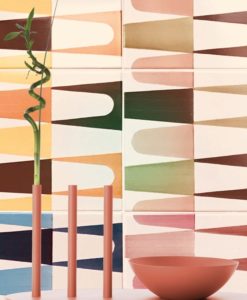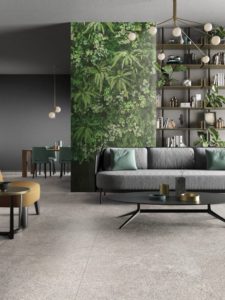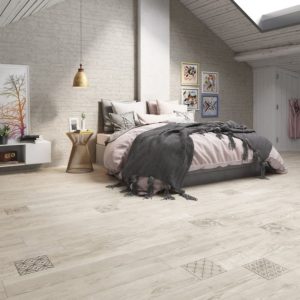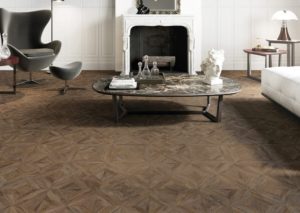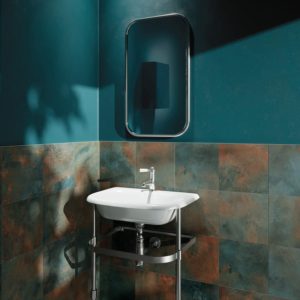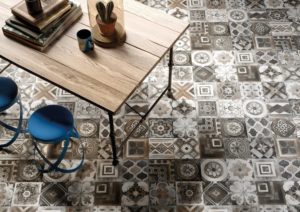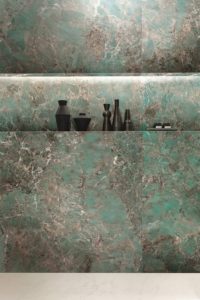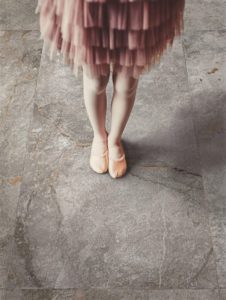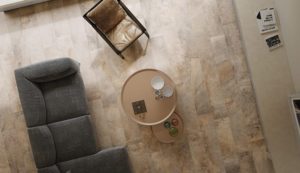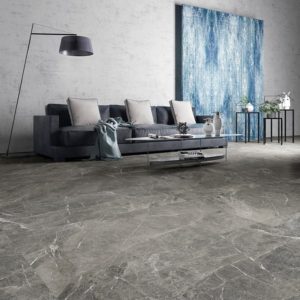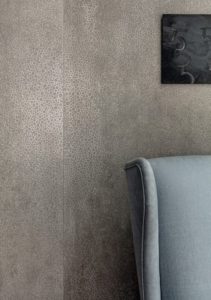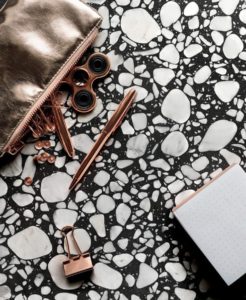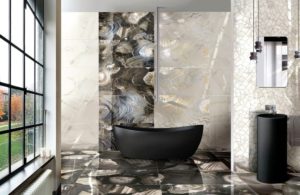Products Trends


How ceramic surfaces are changing | by Cristina Faedi
Each year Cersaie offers a preview of the latest ceramic tile trends before they hit stores and showrooms all over the world. At the last edition of the show, ceramic discovered the energy, brio and vibrancy of colour, a kaleidoscope of shades that coordinate perfectly with texture and material effects. The dominant colour was blue in all its possible hues, from the painterly irregularities of watercolours through to the myriad geometries and astonishing crystal effects of precious stones. But nature was the real source of inspiration for designers looking to create ceramic surfaces with a sensation of comfort. The verdant tones of the “jungle look” rub shoulders with Mediterranean atmospheres in a green-chic style that embraces everything from plain colours through to the most striking patterns, ideal for transforming the surfaces of large slabs into extraordinary wallpapers.
- Happy Days by Ce.Vi.
- Native by Abk
- D_Segni by Marazzi
We saw a wealth of circle and dot patterns in a magical celebration of Italian tradition and creativity, decorative elements in solid colours or on raw concrete slabs, multicoloured pointillist-style watercolours, and accent pieces that offer a contemporary reinterpretation of vintage cement tiles. The circle merges with other geometries, disintegrating in a play of shapes and breaking up into ever smaller irregular fragments to create a sense of movement on light or dark coloured walls, lending the utmost originality to any ceramic surface.
Ceramic adapts perfectly to both indoor and outdoor installations. Just as metal sheets react with oxygen to form rusty, aged surfaces, so too porcelain slabs reproduce the oxidised metallic effect in a gritty yet elegant industrial style. Every aspect reveals obsessive attention to detail throughout the production process, from the colours to the exquisitely-balanced shade variations, from copper and rusty reflections through to bronze tones.
Wood-look ceramic surfaces likewise take on the same variations in colour. Inspired by a return to woodworking as a noble form of art and craftsmanship, they come in the contemporary pale tones of caramel, honey and raw oak as well as the darker classic shades of chestnut and walnut. The cutting process enables modules to be produced in many different combinations and elegant geometric patterns for the most sophisticated layouts.
- Sequoia Century by Elios
- Steamwork by Ascot
- Relate by Caesar
- Miami by CIR
The extraordinary dimensions of the large-size slabs reflect the sheer power of the material, available in 6 mm thick panels with side lengths of up to 3 metres or more and extra-thick versions (2 cm and 3 cm) that guarantee the maximum reliability for indoor and outdoor applications. All of these qualities derive from the unique characteristics of ceramic. It is resistant to scratching and abrasion, to mould and fungi, to staining, chemicals and UV radiation; it has high slip-resistance and is hygienic, low-maintenance and easy to clean.
As for stylistic trends, the industrial look explores the world of recycled materials and combinations of stone and metal, incorporating these two natural elements into the ceramic surface and adopting an antiquing and scratching process to create a product that will lend distinctive aesthetic appeal to any space.
Today’s ceramic products dialogue with the world of architecture. Concrete-effect tiles in particular are highly innovative solutions that stand out for their perfectly silky, monochromatic surfaces and pleasant, uniform touch, ideal for spaces embracing a metropolitan look.
Alongside artificial materials, tiles with a natural stone effect continue to be very popular, drawing inspiration in terms of their aesthetics and texture from basalts, sedimentary stones, slates and limestone. The result is a new ceramic material with vibrant energy available in every colour shade and texture.
- Etoile Illusione by Rex
- Am One by LeonardoCeramica
- Stone 21 by Cedir
Finally, ceramic draws from tradition in its reinterpretation of terrazzo and agglomerate tiles with their precious stone and mineral inclusions, their glittering, sandy speckles on cementitious bases. The retro style lends a timeless atmosphere to even the most contemporary spaces.
Marble-effect ceramic tiles, one of the most enduring and fashionable of all ceramic trends, continue to undergo aesthetic research in a quest for elegance and harmony in large spaces. They stand out for their astonishing graphic realism and attention to detail in terms of colours, veins, fossil inclusions and crystal fragments. The mirror-polished surfaces guarantee exceptional qualities of resistance, strength and ease of cleaning while accentuating every detail of the different types of marble, from the classic statuario through to arabesque, breccia and black. And in the most sophisticated versions, they are transformed into precious stones such as geodes, onyx, alabasters and agates.
- Prestige by Edilgres
- Concreto by Lea
- Shards by Fondovalle
- Preziosa by Brennero
See the latest ceramic trends on the >> Products Gallery
March 2019




